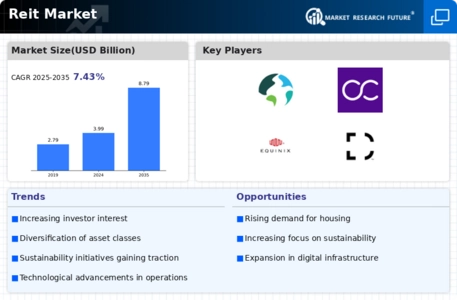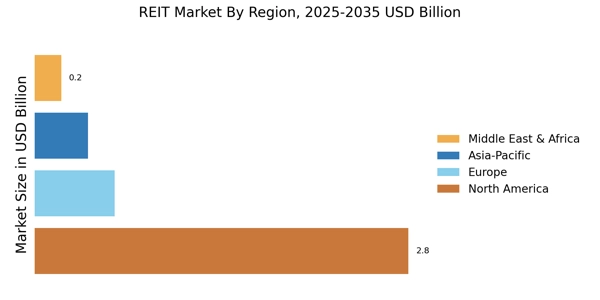Demographic Shifts
Demographic shifts significantly impact the Reit Market, as changing population dynamics influence housing demand and commercial real estate needs. An aging population, for example, may increase the demand for senior housing and healthcare facilities, prompting Reits to adapt their portfolios accordingly. Additionally, urbanization trends lead to increased demand for residential and commercial properties in metropolitan areas. According to recent data, urban areas are projected to house over 68% of the global population by 2050, which could drive demand for multifamily housing and mixed-use developments. The Reit Market must remain attuned to these demographic trends to capitalize on emerging opportunities and align their investment strategies with evolving consumer preferences.
Interest Rate Trends
Interest rate trends play a pivotal role in shaping the Reit Market. As central banks adjust rates, the cost of borrowing for real estate investments fluctuates, influencing investor sentiment. Lower interest rates typically enhance the attractiveness of real estate investments, as they reduce financing costs and increase potential returns. For instance, a decrease in rates can lead to higher property valuations, thereby benefiting Reits. Conversely, rising rates may deter investment, as they can lead to increased capital costs and reduced profitability. In recent years, the Reit Market has witnessed varying interest rate environments, which have prompted investors to reassess their strategies. The interplay between interest rates and real estate performance remains a critical factor for stakeholders in the Reit Market.
Regulatory Environment
The regulatory environment is a crucial driver for the Reit Market, as changes in laws and policies can significantly affect operational frameworks. Tax incentives, zoning laws, and property regulations can either facilitate or hinder the growth of Reits. For instance, favorable tax treatment for Reits can enhance their attractiveness to investors, potentially leading to increased capital inflows. Conversely, stringent regulations may impose additional compliance costs, impacting profitability. Recent legislative changes in various regions have aimed to promote transparency and sustainability within the Reit Market, which could influence investor confidence and market dynamics. Stakeholders must navigate this complex regulatory landscape to optimize their strategies and ensure compliance while maximizing returns.
Technological Advancements
Technological advancements are reshaping the Reit Market, as innovations in property management, data analytics, and investment platforms enhance operational efficiency and decision-making. The integration of technology allows Reits to streamline processes, reduce costs, and improve tenant experiences. For example, the adoption of smart building technologies can lead to energy savings and increased tenant satisfaction, thereby enhancing property values. Furthermore, data analytics enables Reits to make informed investment decisions by identifying market trends and optimizing portfolio performance. As technology continues to evolve, the Reit Market must adapt to leverage these advancements, ensuring competitiveness and sustainability in an increasingly digital landscape.
Economic Growth and Stability
Economic growth and stability are fundamental drivers of the Reit Market, as they directly influence property demand and investment sentiment. A robust economy typically leads to increased consumer spending, higher employment rates, and greater demand for commercial and residential properties. In contrast, economic downturns can result in reduced rental income and property values, adversely affecting Reits. Recent economic indicators suggest a steady recovery in various sectors, which may bolster confidence in the Reit Market. Investors often seek Reits as a hedge against inflation, particularly in times of economic uncertainty. Thus, the interplay between economic conditions and the Reit Market remains a critical consideration for investors and stakeholders.


















Leave a Comment